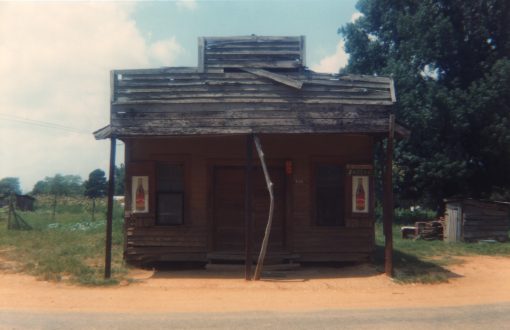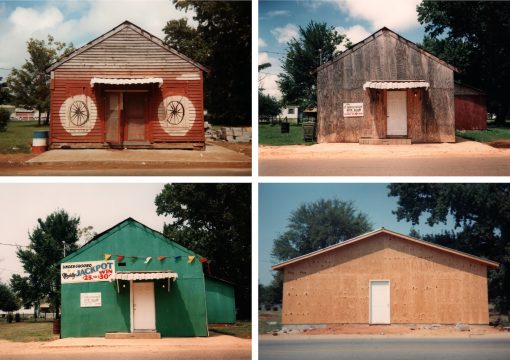"Destruction and Transformation" Spotlight: William Christenberry's "The Underground Club"
William Christenberry was born in Tuscaloosa, Alabama, a few miles from Hale County, the region made famous by Walker Evans and James Agee in their trenchant 1941 documentary book Let Us Now Praise Famous Men. The region has been Christenberry's lifetime subject. Trained as a painter, Christenberry initially made photographs of Hale County's rural landscape only as references for artworks. Using a Kodak Brownie, he concentrated on churches, shops, warehouses, and other examples of vernacular architecture.
The imperfect focus of the Brownie and hazy printed colors lend a distant, flattened atmosphere to his earliest images. In 1961, after moving to New York and while working as a file clerk for Time-Life, Christenberry met Evans, who was then at Fortune magazine. Evans found in the younger artist's snapshots a distinct voice, and he encouraged him to continue his photography. As Christenberry began to use more sophisticated equipment, eventually including an 8 x 10 view camera, he never varied from a sensitive, yet objective approach to picturing Southern landscapes and American vernacular architecture. In particular, he has maintained an ongoing effort to chronicle the changing structures of Hale County. For The Underground Club, Christenberry photographed the same building over a thirty-four-year period, showing the evolution of the nondescript structure from a shop to a nightclub.
The Underground Club is part of Destruction and Transformation: Vernacular Photography and the Built Environment, an exhibition that examines the decisive role of vernacular photography in capturing the convulsive cycles of change that define modernist topographies.

